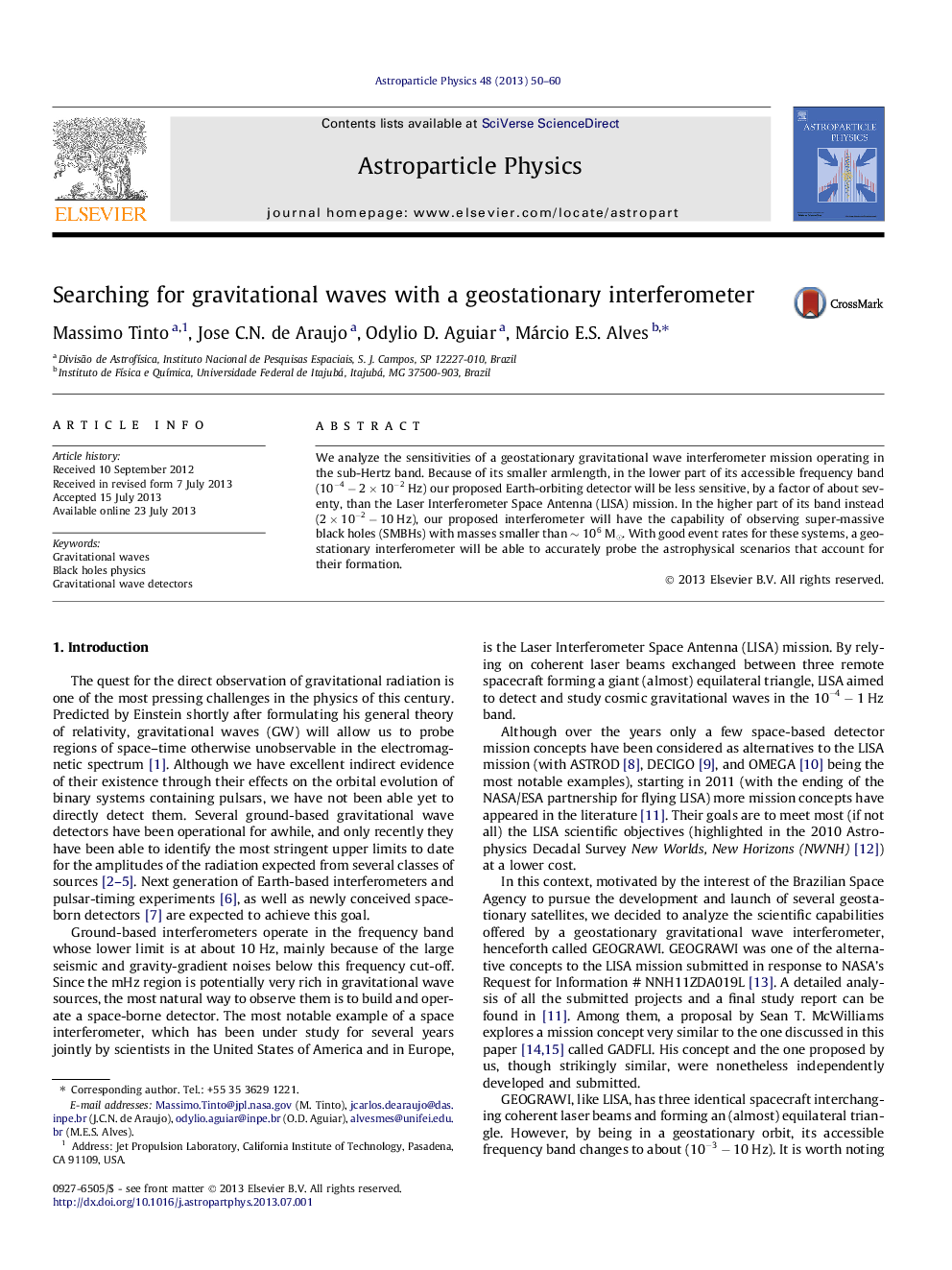| Article ID | Journal | Published Year | Pages | File Type |
|---|---|---|---|---|
| 1770728 | Astroparticle Physics | 2013 | 11 Pages |
We analyze the sensitivities of a geostationary gravitational wave interferometer mission operating in the sub-Hertz band. Because of its smaller armlength, in the lower part of its accessible frequency band (10-4-2×10-210-4-2×10-2 Hz) our proposed Earth-orbiting detector will be less sensitive, by a factor of about seventy, than the Laser Interferometer Space Antenna (LISA) mission. In the higher part of its band instead (2×10-2-102×10-2-10 Hz), our proposed interferometer will have the capability of observing super-massive black holes (SMBHs) with masses smaller than ∼106∼106 M⊙. With good event rates for these systems, a geostationary interferometer will be able to accurately probe the astrophysical scenarios that account for their formation.
